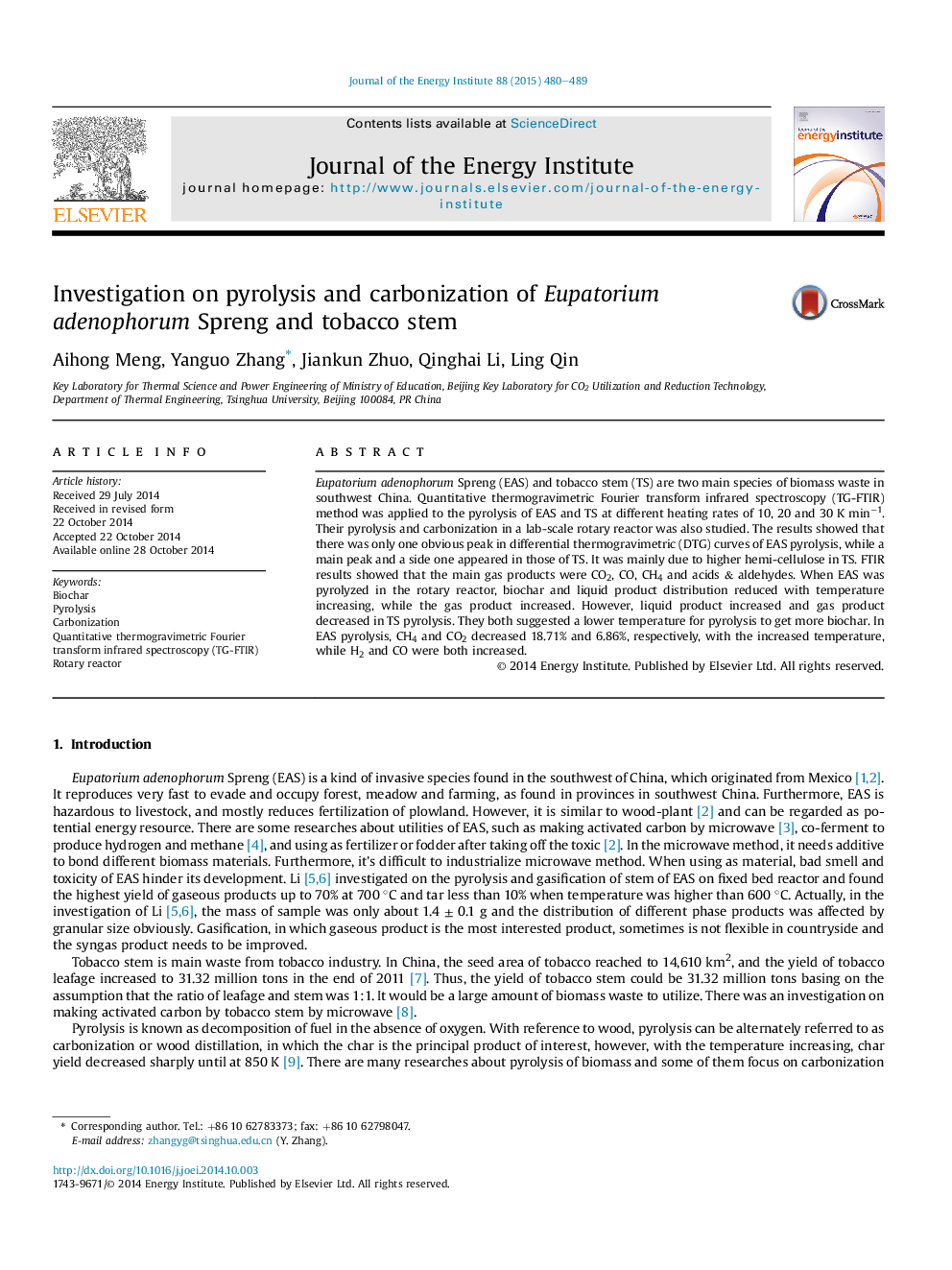| Article ID | Journal | Published Year | Pages | File Type |
|---|---|---|---|---|
| 1747619 | Journal of the Energy Institute | 2015 | 10 Pages |
•Pyrolysis and carbonization of Eupatorium adenophorum Spreng and tobacco stem were investigated.•A main peak and a side one in DTG curves of TS pyrolysis due to more hemicellulose.•Liquid product distribution of EAS reduced with temperature increasing, while that of TS increased.
Eupatorium adenophorum Spreng (EAS) and tobacco stem (TS) are two main species of biomass waste in southwest China. Quantitative thermogravimetric Fourier transform infrared spectroscopy (TG-FTIR) method was applied to the pyrolysis of EAS and TS at different heating rates of 10, 20 and 30 K min−1. Their pyrolysis and carbonization in a lab-scale rotary reactor was also studied. The results showed that there was only one obvious peak in differential thermogravimetric (DTG) curves of EAS pyrolysis, while a main peak and a side one appeared in those of TS. It was mainly due to higher hemi-cellulose in TS. FTIR results showed that the main gas products were CO2, CO, CH4 and acids & aldehydes. When EAS was pyrolyzed in the rotary reactor, biochar and liquid product distribution reduced with temperature increasing, while the gas product increased. However, liquid product increased and gas product decreased in TS pyrolysis. They both suggested a lower temperature for pyrolysis to get more biochar. In EAS pyrolysis, CH4 and CO2 decreased 18.71% and 6.86%, respectively, with the increased temperature, while H2 and CO were both increased.
